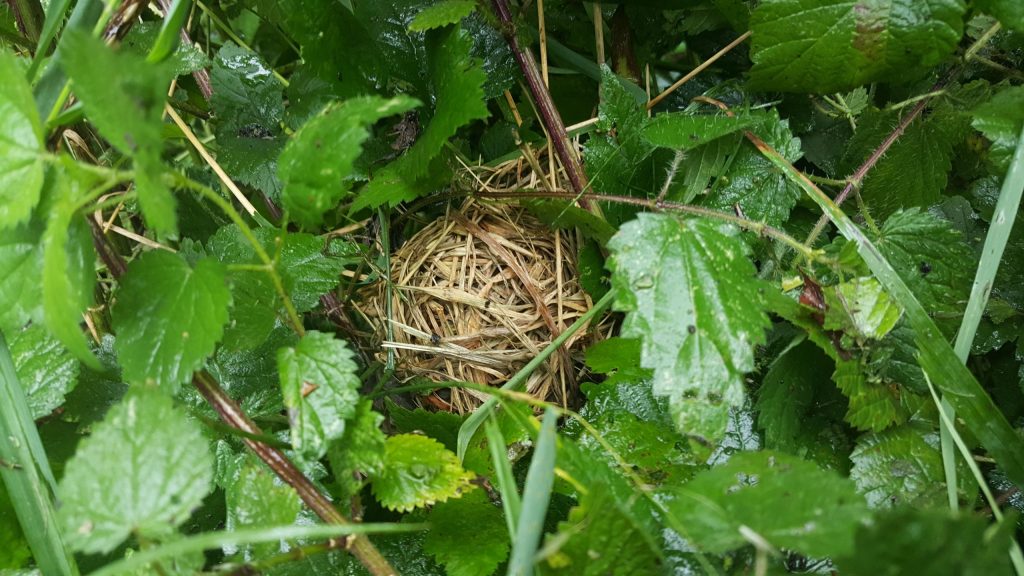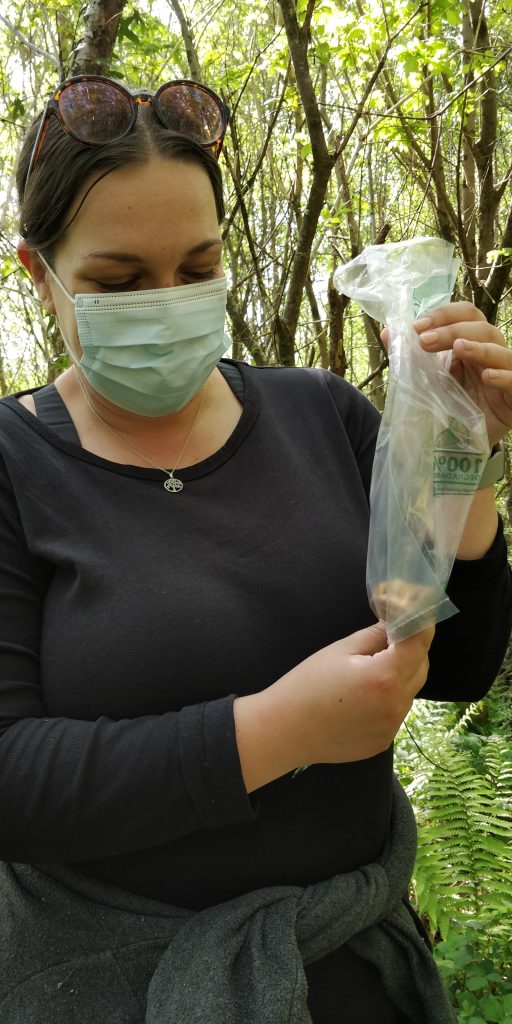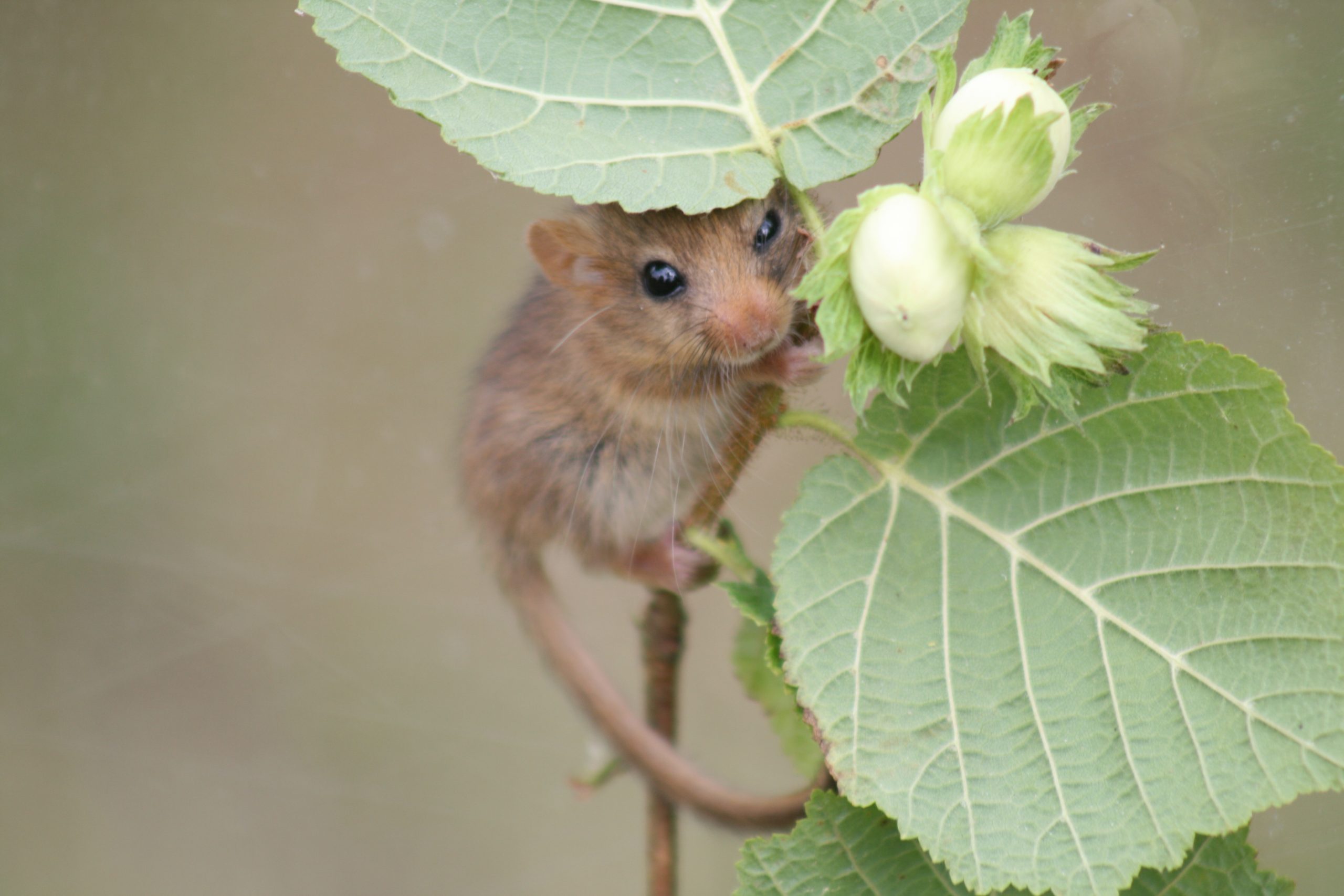How Finding Natural Nests can Help us Learn More about Hazel Dormice – by Kayleigh Hunt
Hazel dormice (Muscardinus avellanarius) are elusive creatures, spending most of their active time living an arboreal life, hidden amongst vegetation. Because of this, it is a challenging species to survey and monitor. In the UK there are several survey methods that are widely used, the most popular including nut hunts, nest boxes and nest tubes. Searches for gnawed hazelnuts is described as the most efficient method to determine if dormice are present at a site, with nest tubes and nest boxes deemed suitable methods where hazel isn’t present[1]. However, both have their limitations, for example, nest tubes are only suitable to use between April and November and nut searches are good for determining presence but require huge efforts to show likely absence. Nest boxes work, but are best for monitoring, rather than a quick method to find out if dormice are present on site. Another method that has been trialled by several groups in recent years is that of footprint tunnels. Findings from a study carried out in Nottinghamshire suggest that this is a viable method of detecting dormouse presence. A recent study carried out in Suffolk and Essex compared nest tubes and footprint tunnels and found tunnels to be more effective at detecting dormice when used in scrub and hedgerow habitats[2].

Dormouse (credit: John Webley)
Natural nest searches are utilised far less as a survey method compared to others, especially in the UK. This, however, means that we could be missing out on vital data regarding nest site preferences, which materials are most used to build nests, and the general nesting behaviour of hazel dormice. Natural nest searches are however far from the ‘easiest’ survey method available. Dormice tend to prefer to nest in tree holes and dense vegetation, making it difficult to find these nests. Additionally, natural nest searches have been classified as inadequate for establishing dormouse presence[1]. This is largely due to the high levels of skill required to find the wild nests amongst thick vegetation and knowing where and when to look. Secondly, it can be difficult to distinguish nests constructed by different species, and animals will also use each other’s nests. For example, a recent NDMP survey I carried out with my dormouse licence trainer, showed a bird had taken over a previously identified dormouse nest. However, if a dormouse population is known to exist in an area, it could be good practice to carry out natural nest searches, alongside other methods, to develop a broader understanding of how dormice use the habitat and enable us to learn to identify nests more easily.

Dormouse nest in rose (credit: Lorna Griffiths)
As well as studying for an MSc in Wildlife Biology & Conservation, I am currently working as an intern with People’s Trust for Endangered Species. I am analysing data from natural nest searches carried out in a broadleaved woodland in Suffolk. My first task was carrying out a literature review. It became apparent that there is very little published research on ‘natural’ dormouse nests and the use of natural nest searches as a survey method, particularly in the UK. The review did however provide some interesting findings, which are worth highlighting. It is evident that although detailed information on nest material preferences can be gained from nest box data, natural nests can vary in material use compared with nests found within boxes. For example, a large-scale study carried out in Belgium found that although natural nests contained all the materials found in nest boxes and tube nests, nest boxes and tubes contained more leaves from hazel and less of other species than natural nests[3]. The authors concluded that this was likely due to the boxes and tubes being suspended in locations close to where these materials were present (20% were placed in hazel shrubs). This shows that dormice will often utilise materials that are close to the location of nesting. Another reason for variation in nest material is suggested to be due to the need for stronger, more supportive materials in natural nests than in those of protected within nest boxes. It is therefore important to gather data on both types of nests as data cannot necessarily be compared. The findings from the literature review also suggest that dormice will often nest within vegetation as opposed to nest boxes where preferred habitat is present [3-5]. This means that where nests are not present in boxes, they may be present in the surrounding area but will ultimately be missed if not surveyed for.

Dormouse nest in nettles (credit: Lorna Griffiths)
As part of the natural nest project, we would like to collect and collate relevant data from conservationists, consultants, landowners/managers, and volunteers regarding their knowledge of natural nests. We have created a questionnaire that should enable us to gather interesting and useful data, ultimately enabling us to produce a set of guidelines for use in England and Wales regarding natural nest searches. We hope this will encourage monitors and surveyors to use this survey method in the future, alongside more traditional surveys and monitoring, given the broad amount of information that can be gained from the natural nests of dormice. Please share your data on natural nests with us so we can learn more about these endangered mammals.

Kayleigh Hunt in the field during training to gain her dormouse licence (credit: Jen Bousfield, dormouse licence trainer)
References
[1] Bright, P., Morris, P., & Mitchell-Jones, A. J. (2006). The dormouse conservation handbook. 2nd edn. English Nature.
[2] Bullion, S., Looser, A. & Langton, S. (2018) An Evaluation of the Effectiveness of Footprint Tracking Tunnels for Detecting Hazel Dormice. In Practice – Bulletin of the Chartered Institute of Ecology and Environmental Management. 101: 36-41.
[3] Verbeylen, G., Andre, A., Desmet, A., Manzanares, L., Mels, B.,Pulles, R., Swinnen, K., Vanseuningen, I. & Vermeiren, M. (2017). Nest site selection and use of other habitats by the C. avellana dormouse Muscardinus avellanarius in Voeren (Flanders). Report Natuur.studie 2017/3, Natuurpunt Research Department (Mammal Working Group), Mechelen, Belgium.
[4] Berg, L., & Berg, Å. (1998, January). Nest site selection by the dormouse Muscardinus avellanarius in two different landscapes. In Annales zoologici fennici (pp. 115-122). Finnish Zoological and Botanical Publishing Board.
[5] Eden, S.M. & Eden, R.M.G. (2001) The Dormouse in Dorset: a reappraisal of Dormouse Ecology. Dorset Proceedings 123, 7, 5-91.
Blog posts on the CIEEM website are the views and opinions of the author(s) credited. They do not necessarily represent the views or position of CIEEM. The CIEEM blog is intended to be a space in which we publish thought-provoking and discussion-stimulating articles. If you’d like to write a blog sharing your own experiences or views, we’d love to hear from you at SophieLowe@cieem.net.
